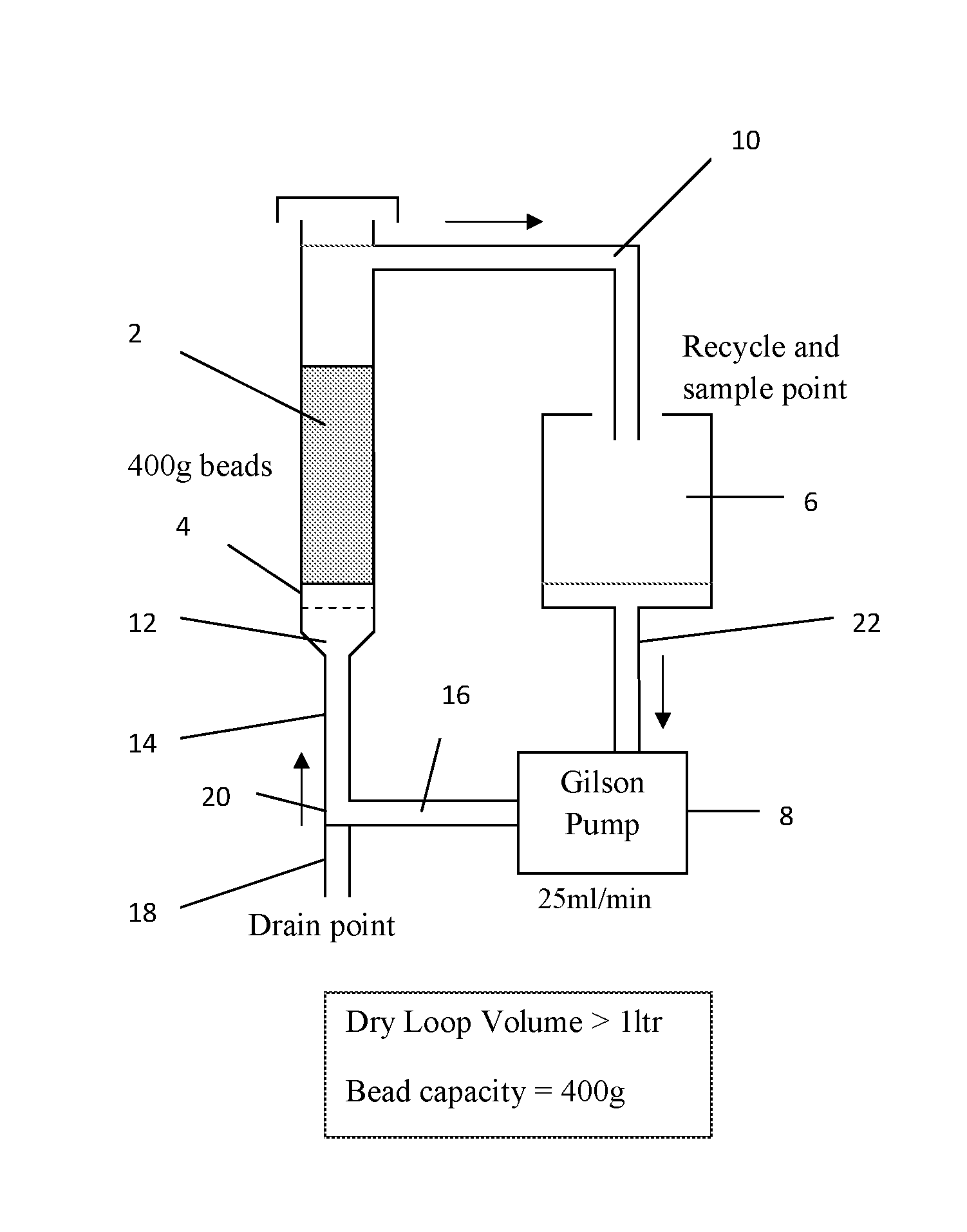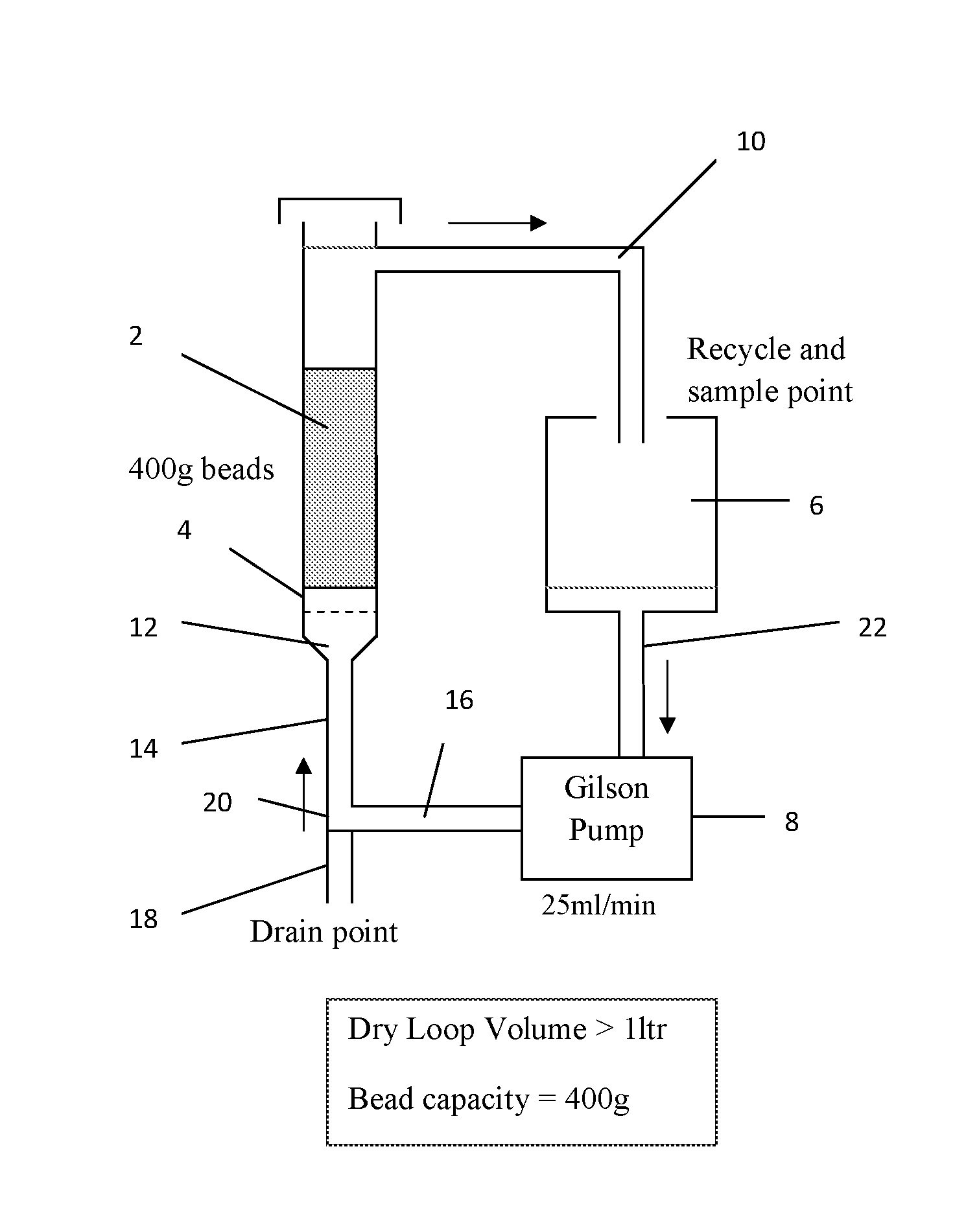Process for production of a silica-supported alkali metal catalyst
a technology of alkali metal catalyst and silica supports, which is applied in the direction of catalyst regeneration/reactivation, physical/chemical process catalyst, instruments, etc., can solve the problems of excessive coke formation at the front face of the catalyst bed, the loss of catalyst activity, etc., and achieve the effect of restoring catalyst activity
- Summary
- Abstract
- Description
- Claims
- Application Information
AI Technical Summary
Benefits of technology
Problems solved by technology
Method used
Image
Examples
working examples
Caesium Regeneration of an Exhausted Catalyst
[0061]Used Catalyst
[0062]In all examples, samples from the same batch of used and depleted caesium on silica / zirconia catalyst beads (5.05 wt % Cs, 0.86 wt % Zr, 130 m2 / g) were used. This catalyst, when fresh, had 6.7 wt % Cs on it with 0.86 wt % Zr and had a surface area of 327 m2 / g. pH measurements, where quoted, were made by adding an equal volume of water to a sample of solution and observing the colour change in a pH paper immersed in it.
example 1
[0063]A 1.2 wt % solution of caesium in methanol was prepared using caesium carbonate (Cs2CO3, 99% Reagent Plus from Aldrich) and dry methanol (2 with a glass frit 4 at the bottom. 1000 ml of caesium solution in methanol was charged to a 2 liter flask 6 (catalyst: solution ratio φ=0.4 kg / liter) and pumped up-flow at 25 ml / min through the catalyst bed from the bottom of the column by a Gilson pump 8. Solution that had passed through the bed was returned to the flask via a recycling conduit 10 in the column 2 above the level of the catalyst. XRF analysis (Oxford Instruments X-Supreme8000) was used to measure the caesium content in solution for the starting feed and periodic samples of the return flow from the column. The solution was recirculated in this way until XRF analysis showed that a steady-state caesium concentration in solution had been reached, which occurred after 2 hrs, when it was measured at 0.55 wt % (54.1% uptake from solution)
[0064]The methanol solution was then drain...
example 2
[0065]The remaining caesium in methanol solution from Example 1 (0.55 wt % Cs, 650 ml) was made up to 1000 ml with fresh methanol and extra caesium carbonate added to increase the concentration of caesium in solution to 1.38 wt %. A fresh 400 g of used catalyst was then regenerated using the same method as Example 1 to yield, after drying, a catalyst with 6.78 wt % caesium on it. The remaining solution contained 0.79 wt % caesium by XRF (42.4% uptake from solution).
PUM
| Property | Measurement | Unit |
|---|---|---|
| diameter | aaaaa | aaaaa |
| diameters | aaaaa | aaaaa |
| wt % | aaaaa | aaaaa |
Abstract
Description
Claims
Application Information
 Login to View More
Login to View More - R&D
- Intellectual Property
- Life Sciences
- Materials
- Tech Scout
- Unparalleled Data Quality
- Higher Quality Content
- 60% Fewer Hallucinations
Browse by: Latest US Patents, China's latest patents, Technical Efficacy Thesaurus, Application Domain, Technology Topic, Popular Technical Reports.
© 2025 PatSnap. All rights reserved.Legal|Privacy policy|Modern Slavery Act Transparency Statement|Sitemap|About US| Contact US: help@patsnap.com



